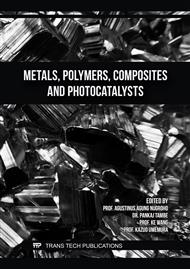p.3
p.9
p.15
p.23
p.29
p.41
p.57
p.71
Study on the Influence Factors of Mechanical Properties of PPTA Fibers in Microscale Simulation
Abstract:
Poly (p-phenylene terephthalamide) (PPTA) fiber is a high-performance aromatic polyamide fiber that has a wide range of applications in aerospace, defense, automotive and other fields. Molecular simulation methods have unique advantages in studying the microstructure of materials, and with the development of molecular force fields, simulation algorithms, and computer hardware and software, they have been widely applied in the analysis and design of material microstructures. In this article, molecular simulation techniques were used to construct PPTA unit cell structures with different multiple of cell expansion, and the effects of multiple of cell expansion and length of bond broken on the micro mechanical properties of PPTA fibers were explored. The aim is to study the relationship between structure and properties at the microscale, providing theoretical basis for the improvement and prediction of the performance of bullet-resistant fibers.
Info:
Periodical:
Pages:
15-21
Citation:
Online since:
May 2025
Authors:
Price:
Сopyright:
© 2025 Trans Tech Publications Ltd. All Rights Reserved
Share:
Citation:



